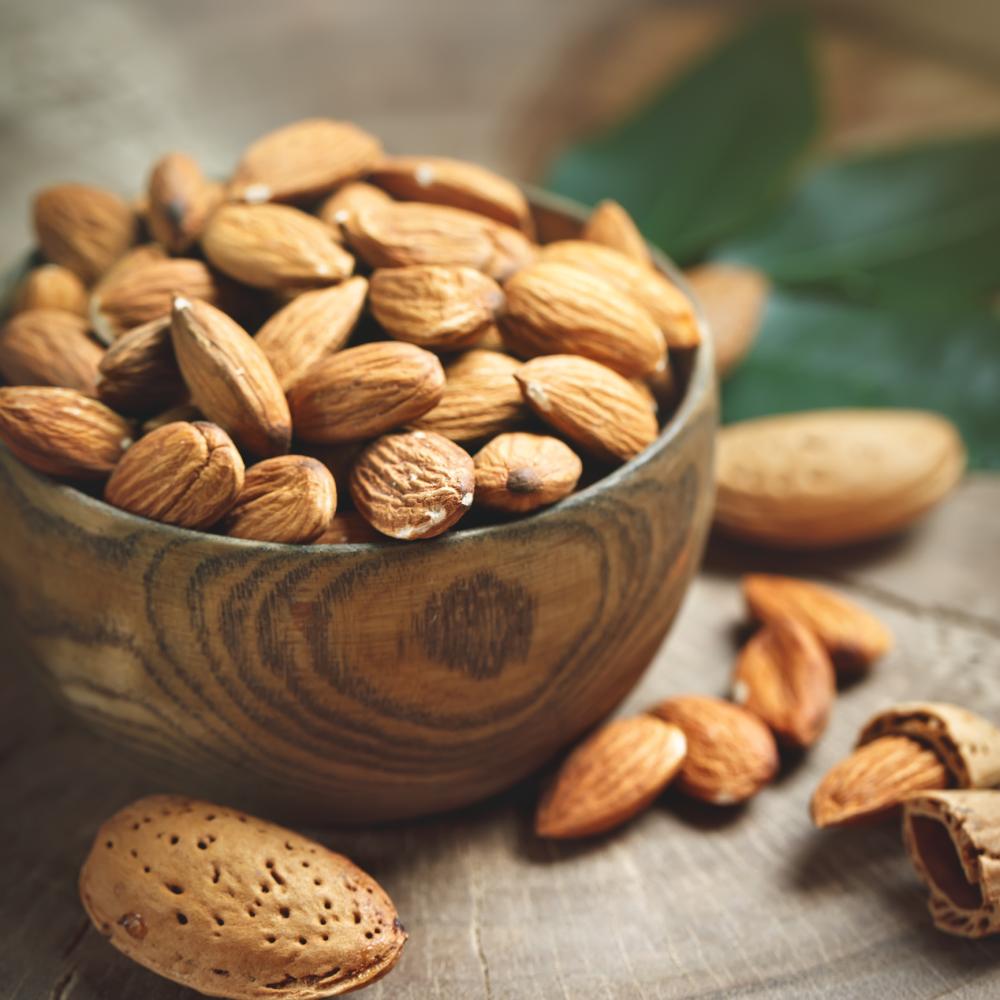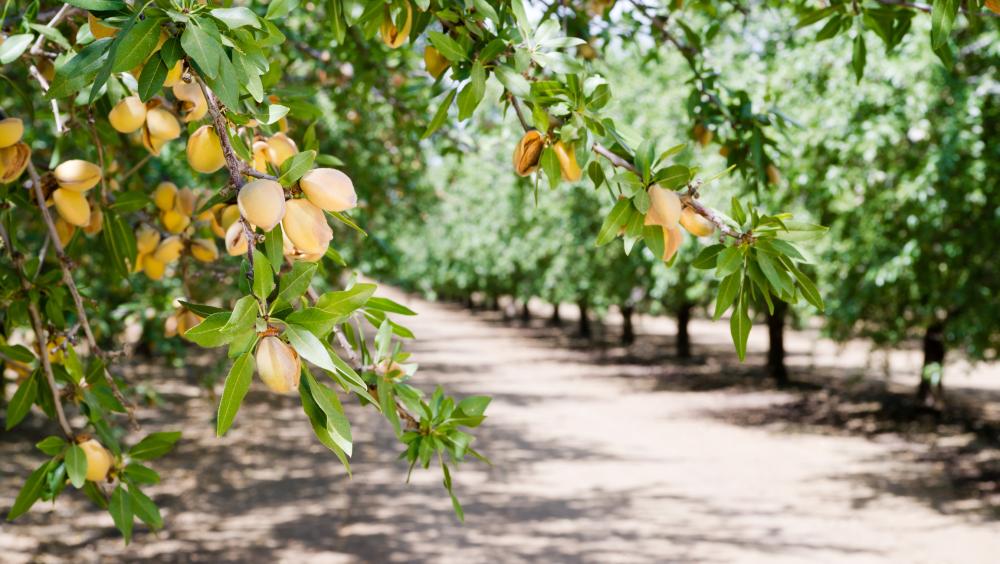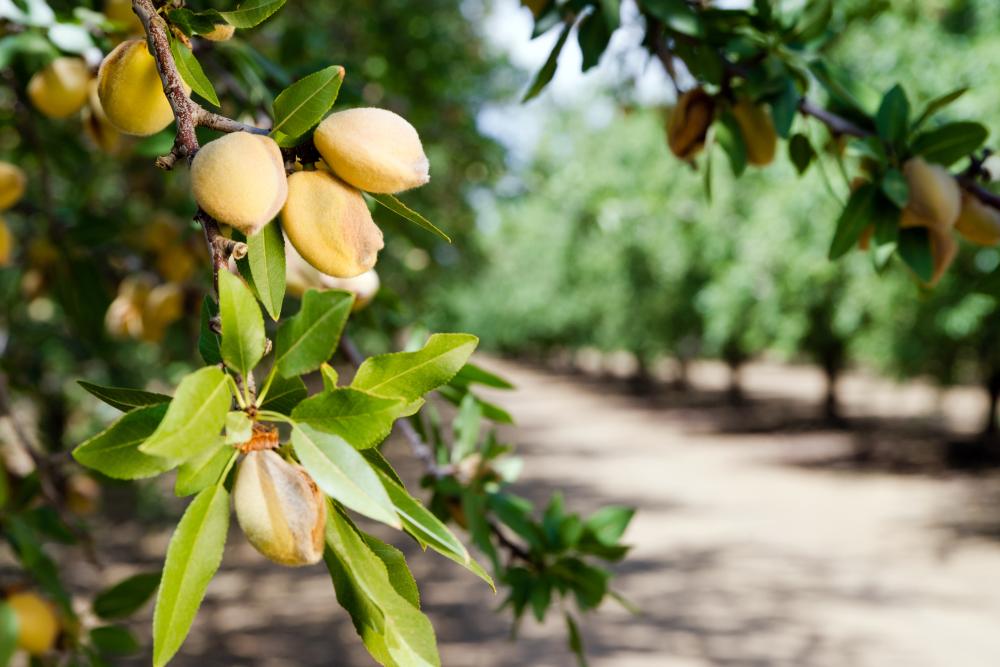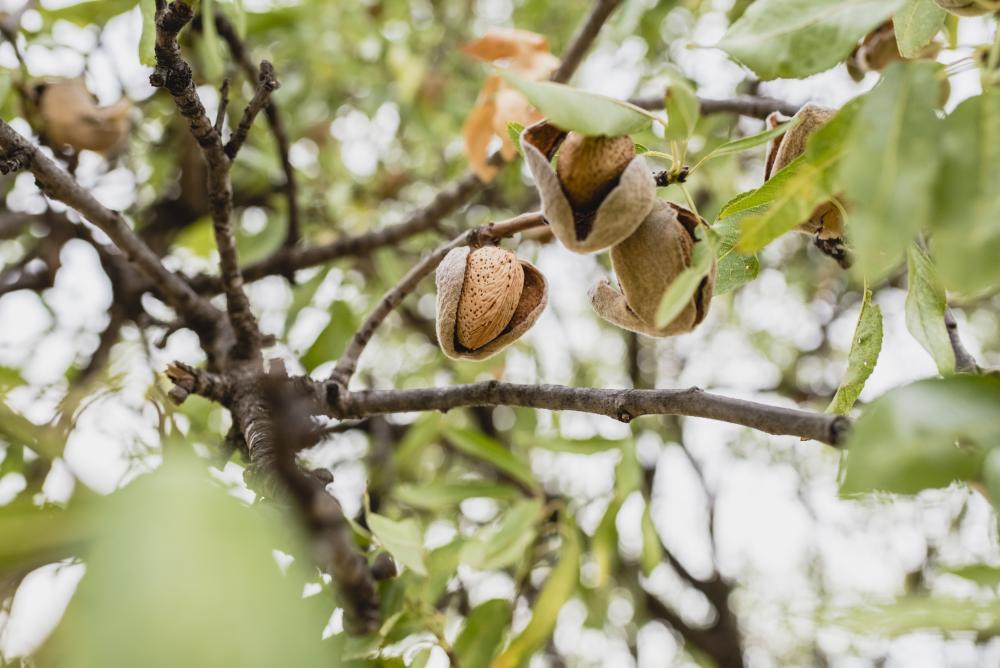Almond Tree Care – How To Grow And Harvest Almonds
While some trees have fruits and others have berries, the almond tree has seeds. And those edible seeds are covered by a hard shell that is not easy to crack. But apart from the seeds or drupes, the tree itself is highly ornamental.
With colorful twigs that change color from green to purple to gray, and dense andlush green leaves the tree offers shade and decoration in a spacious landscape. And just like any other tree, once the almond tree establishes, it very much becomes self-sufficient. You don’t have to worry about dedicating much time to care for this hardy tree. Read on to find out how to grow, care for, and harvest almonds.
All About Almond
A native of Iran and Asia Minor, the almond tree (Prunus dulcis), grows in many parts of the world. A distant cousin of the peach tree, the almond is a deciduous tree that doesn’t grow above 32 feet. That will make it easier for you to prune, care for, and harvest the almonds without the need for a professional.
The slender trunk of the tree doesn’t grow thicker than 12 inches which gives the tree a graceful and elegant look. In the spring the new shoots emerge and they’re usually green. But sun exposure turns them purple and they shimmer under the sunlight. The green leaves follow and each leaf is about 5 inches long with a serrated edge.
Shortly after the lush canopy has turned green and purple, small white flowers open shyly in rows all over the small twigs and branches. Sometimes the flowers will have pinkish shades depending on the variety. But on average, the bloom doesn’t grow about 2 inches in diameter.
Although the almond tree grows in zones 7 to 9, it goes into dormancy after it sheds its leaves and requires between 200 to 700 chill hours during the winter months.
After the flowers are pollinated, the small drupes develop out of the depth of the female flowers. It will take the tree three years to start flowering and producing fruits. And the fruits themselves need up to 7 to 8 months to reach full maturity and become ready to harvest.
The average almond drupe is about 2.5 inches long and sometimes it will have two kernels inside. The seeds of the almond are rich in vitamins and protein.
Almond Varieties
Almonds come in different varieties and over the years only the high yielding cultivars and species have been adopted by commercial growers in California and elsewhere. Here are some of the most popular almond varieties to grow in your garden.
- Carmel: A smallish tree but with high-quality nuts and decent yield. Commercially, this variety is not very popular due to the tree’s susceptibility to blossom brown rot which infects almost every second branch. Bud failure is another issue you have to deal with with this variety.
- Nonpareil: A relatively new cultivar that was first developed in the late 19th century. It was soon embraced with the nascent California almond industry and soon became the most widely grown cultivar. Although it only starts to bloom in the late spring or early summer, it’s one of the earliest varieties to harvest.
- Sonora: If you prefer a variety that blooms early and has good quality almonds and a good crop, this is the variety for you. The almonds are in the same price range as Nonpareil. However, you’ll need to have other almond varieties growing nearby to pollinate the Sonora and ensure a high yield.
- Monterey: A late bloomer, this variety is often paired with Nonpareil to improve pollination. It’s also a popular choice if you want to grow almonds commercially since it is a very productive tree. The only problem is that often the drupes will have double kernels which reduce their quality.
- Fritz: In an almond orchard, Fritz is often a good companion to Nonpareil. It blooms a few days later so they can cross-pollinate without a problem. But the reason it’s not very popular is that in the spring, the tree often gets infected with anthracnose. This often happens as a result of rainfall and poor air circulation.
How to Grow Almond
You’ll need to start the almond tree from seeds. But not the kind of seeds you buy at the grocery store. These seeds are roasted and won’t germinate. You can order the seeds online or buy them at the local nursery. Make sure you live in zones 7 to 9 to have the right growing conditions for this tree.
- Soak the almond drupes in warm water overnight to soften the outer shell.
- Examine the seeds the next day for signs of mold. Get rid of any damaged seeds.
- Use a nutcracker to crack the shells open just enough to allow moisture in. If you break the shell, throw it away.
- Prepare small pots for the seeds. Fill the pots with a general-purpose potting mix.
- Plant a seed in each pot about one inch deep and cover it with the potting mix. Make sure the cracked side of the shell is facing up.
- Water the pots to get the potting mix moist and keep it that way until the seeds germinate.
- Place the pots indoors where they get plenty of direct sunlight.
- Once the threat of the last frost is over, prepare a sunny spot in the garden. Till the top 12 inches of the soil.
- Build a small mound about 2 inches high and the same in diameter for each seedling.
- Ease the seedling out of the pot and plant it in the middle of the mound where the soil almost reaches the lower leaves.
- Space the seedlings at least 20 feet apart and make sure they have enough space to grow away from any construction or other large trees in the area.
Almond Care
Although the almond tree is a hardy type that takes care of itself once it establishes and matures, the first three to four years of the tree’s life are usually the most crucial for its success. During this time, the tree will rely on your care and will get most of its water and nutrients from the surface of the soil. Pruning, watering, and feeding are the three tasks you’ll have to do regularly.
Soil
The almond tree needs soil that is loose, well-draining, and rich. If you have either clay or loamy soil, you’ll need to amend it with perlite to improve its texture. Before you plant the seedling in the garden, till the top one foot of the soil and add about 50 percent of perlite to give it the right texture. Check the acidity of the soil and add lime to make it slightly acidic. This can have a great impact on the productivity and the flavors of the almond. Although neutral soil can be good, a degree of acidity tends to improve the growth rate and bloom ratio of the tree.
Water
Once you have made sure that the soil is sandy and well-draining you can start watering the seedling as soon as you plant it. The almond tree needs a lot of water on a regular basis. Although the roots are sensitive to waterlogged soil, they can’t deal with dry soil either. So water liberally and flood the soil every time. To ensure you don’t forget to water the tree you can use a drip system that keeps the roots well hydrated. During the rainy season, switch off the drip irrigation system and let the rainfall water the tree. Cut back on watering when the tree sheds its leaves in the fall and goes into dormancy during the winter months.
Fertilizer
The faster the almond tree establishes the better. And to help it reach maturity and start flowering and producing almonds, you’ll need to fertilize it. Start early in the spring around the time the first growth emerges. Apply the fertilizer around the drip line and water immediately. Avoid spreading the granules of the balanced fertilizer close to the base of the trunk to protect the roots. Side dress regularly with compost and aged manure. Apply the organic compost once a month from the spring until mid-summer. In the fall and winter, the tree barely shows any signs of growth so feeding is not required.
Pruning
If you have seen an almond tree growing in the wild you probably noticed that the canopy is anything but uniform. The branches grow every other way without any apparent structure. But what’s good in the wild isn’t so in the garden. You’d want the tree to look its best and enrich the landscape. And to achieve that you’ll need your pruning shears and a ladder. Since the tree is compact in size, it’s easy to prune it without the need for professional help.
Start pruning in the early winter after all the leaves have fallen. Cut the branches at the base and if they’re thick, use a saw. Aim for wayward growing branches and those that stick out, intersect with, or cover other branches.
Clear out pathways for the sunlight and airflow to reach the inner depths of the tree. The more sunlight the branches get the more blooms and fruits the tree bears each year.
Throughout the year, do light pruning to remove diseased or damaged branches or keep the tree in good shape. Regular pruning improves the productivity of the tree so don’t neglect this most important of all tasks.
Pests and Diseases
Verticillium wilt, crown gall, and blossom brown rot are the three main diseases that infect the almond tree. Some varieties such as Fritz are also susceptible to anthracnose so avoid planting that variety if the disease is spreading in your area.
The other three diseases are mostly a result of overwatering or humid conditions surrounding the tree. Blossom brown rot infects the blooms if the spring is rainy. To combat verticillium wilt, graft the almond tree on a robust peach or bitter almond rootstock.
Regular pruning improves air circulation around and within the canopy of the tree. Also, avoid nicking the trunk of the tree with a garden tool since that leads to crown gall.
Harvesting Almond
After 3 to 4 years, the almond tree is finally ready to flower and bear almonds. The first year, don’t expect a big harvest. But the next year onwards the tree will settle into a decent annual harvest. Most sweet almond varieties need between 6 to 8 months before the fruits are ripe and ready for picking.
You can start harvesting between July and October depending on the variety you have planted. Look for signs of ripeness which include dry and cracked skin. When you’re ready to harvest the almonds, spread a large sheet under the tree then take hold of the slim trunk and shake it vigorously.
The ripe almonds start falling on their own. Collect them and put them in a plastic bag then keep them in the freezer for up to 2 weeks. This will eliminate any pests lingering on the shells.



